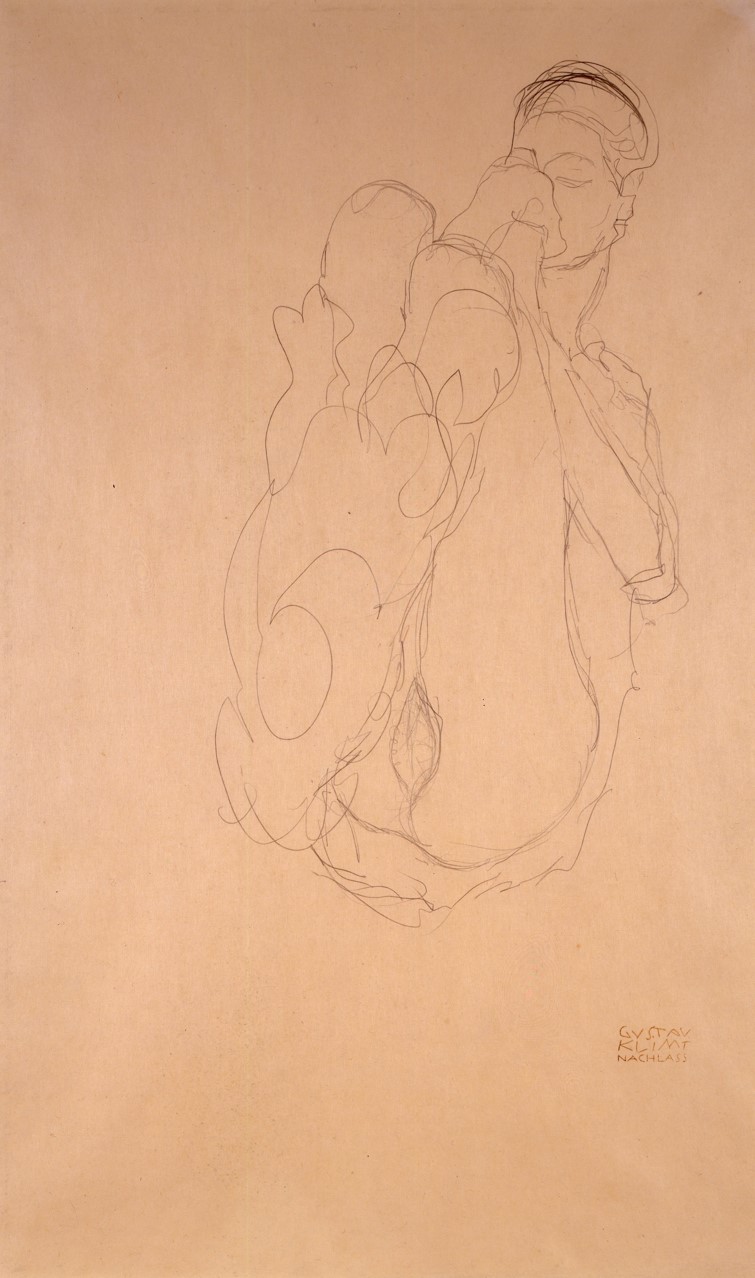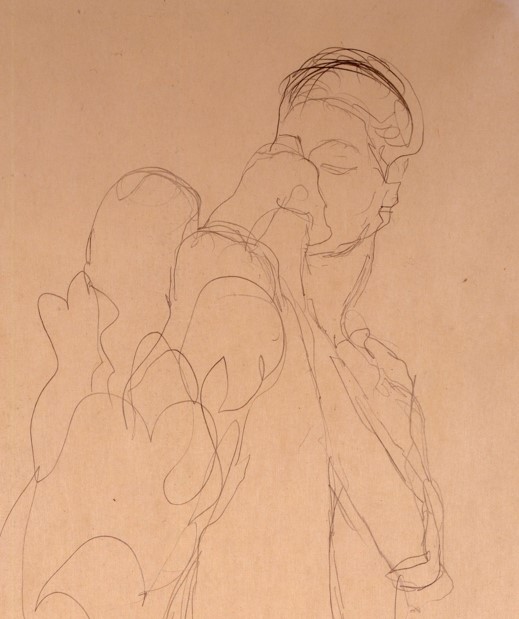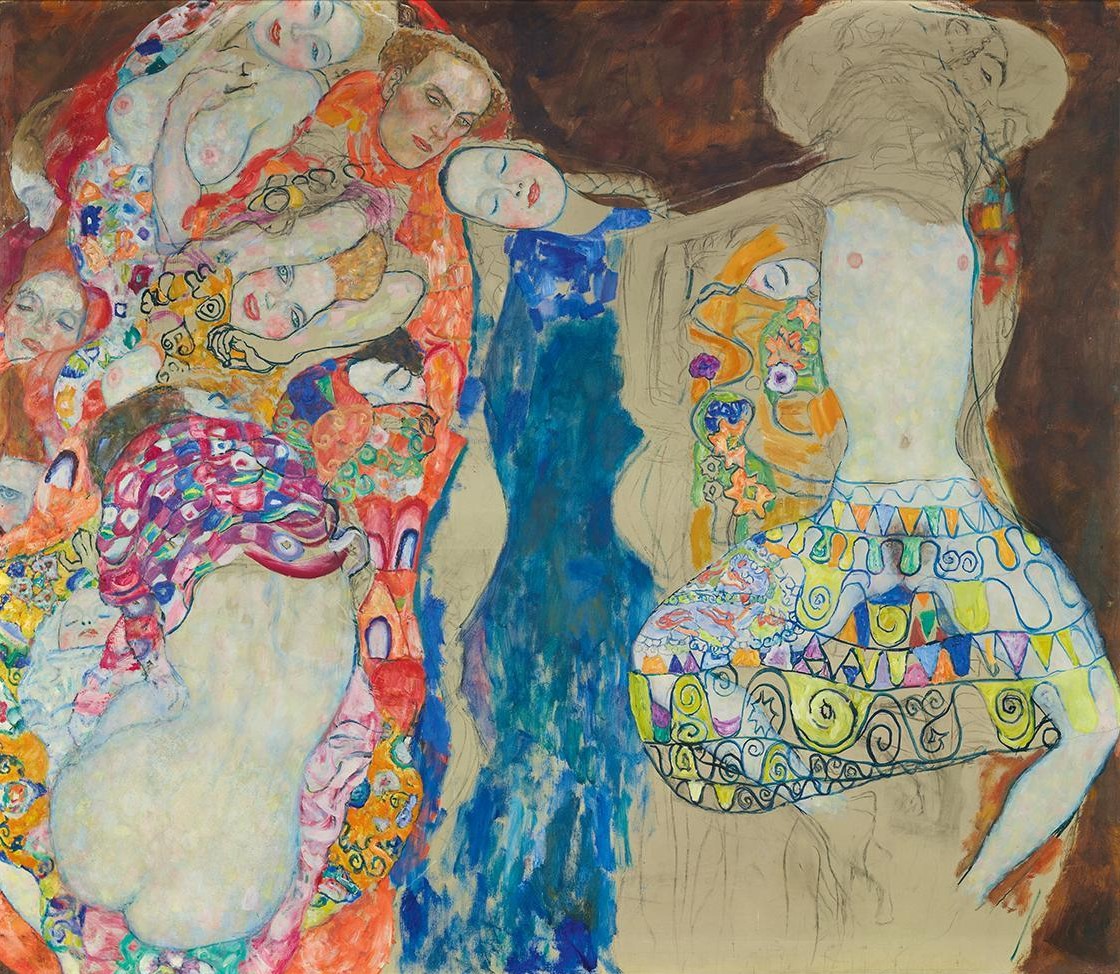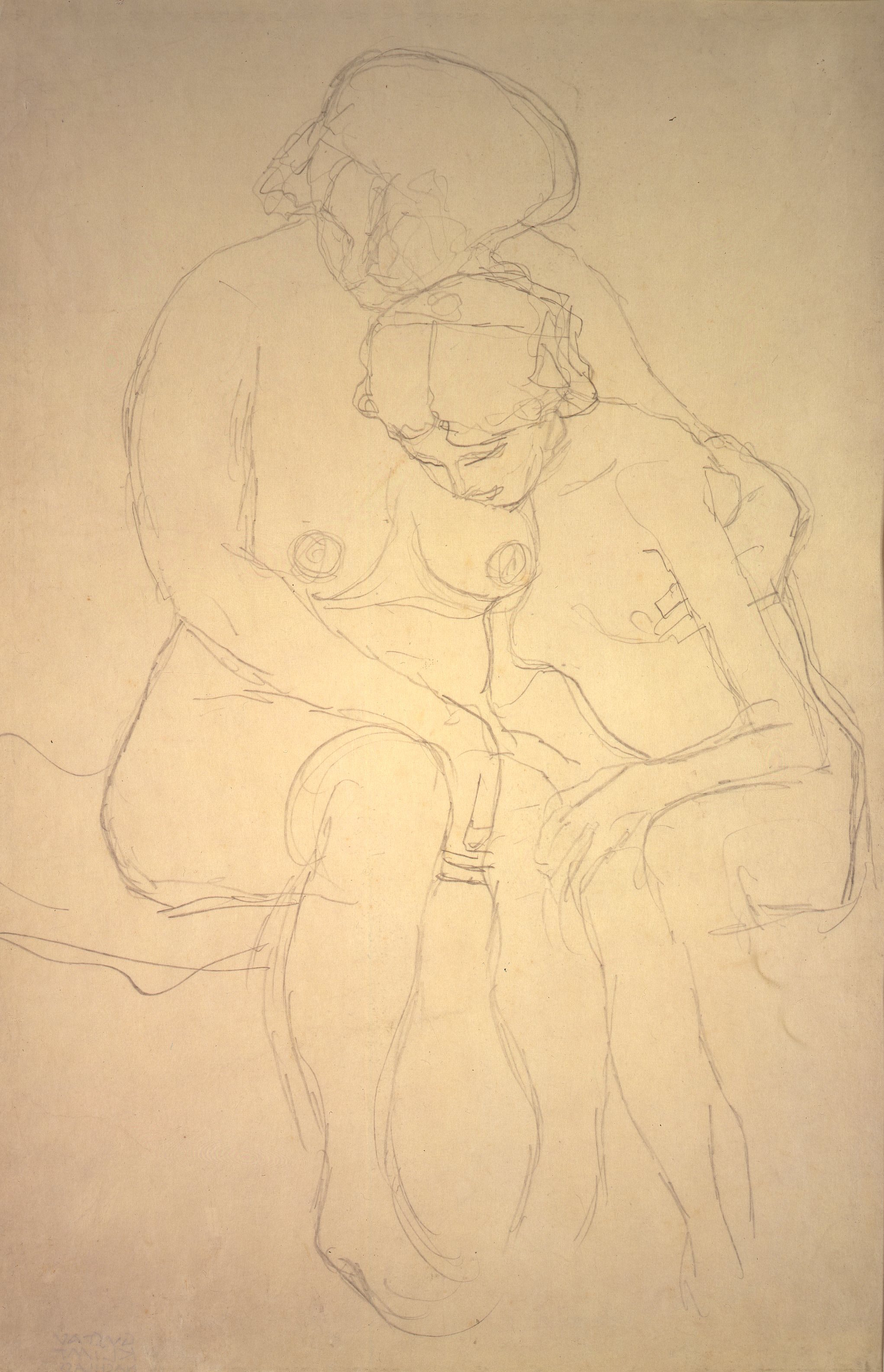Galería Cayón is pleased to present two exhibitions in its two Madrid spaces with works on paper by three artists of the last century.
In "Gustav Klimt, nudes and portraits on paper", six works on paper by Gustav Klimt (Baumgarten, Austria, 1862-Alsergrund, Austria, 1918), one of the freest and bravest draughtsmen of the first quarter of the 20th century, will be shown.
The selection of pencils, which covers some of his themes of interest from 1910 to 1917, focuses not only on his sensual and often explicit female nudes, but also on his facet as a portraitist, as one of his famous portraits of Adele Bloch-Bauer, the model for the famous 1907 gold leaf effigy, will be on display.

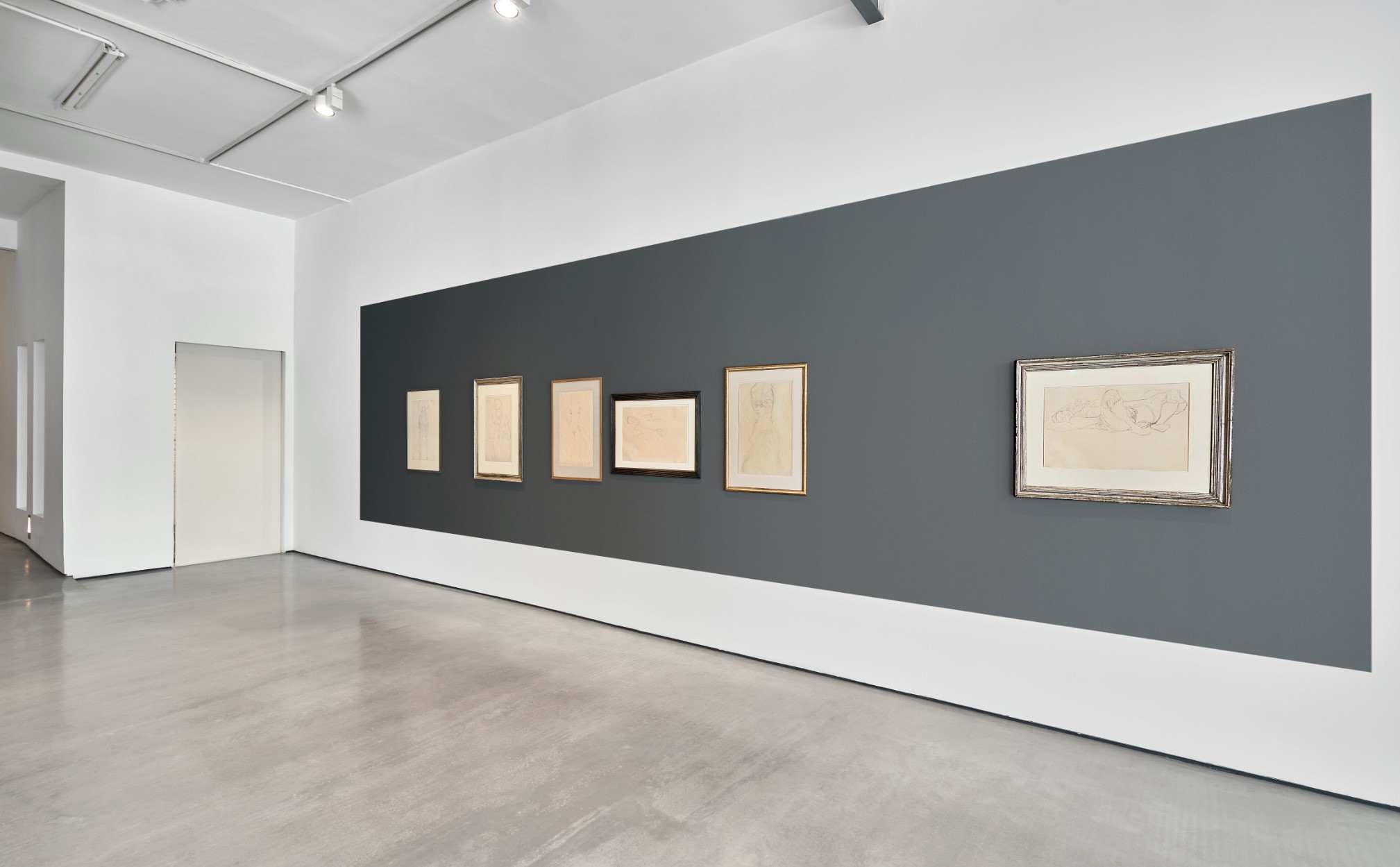
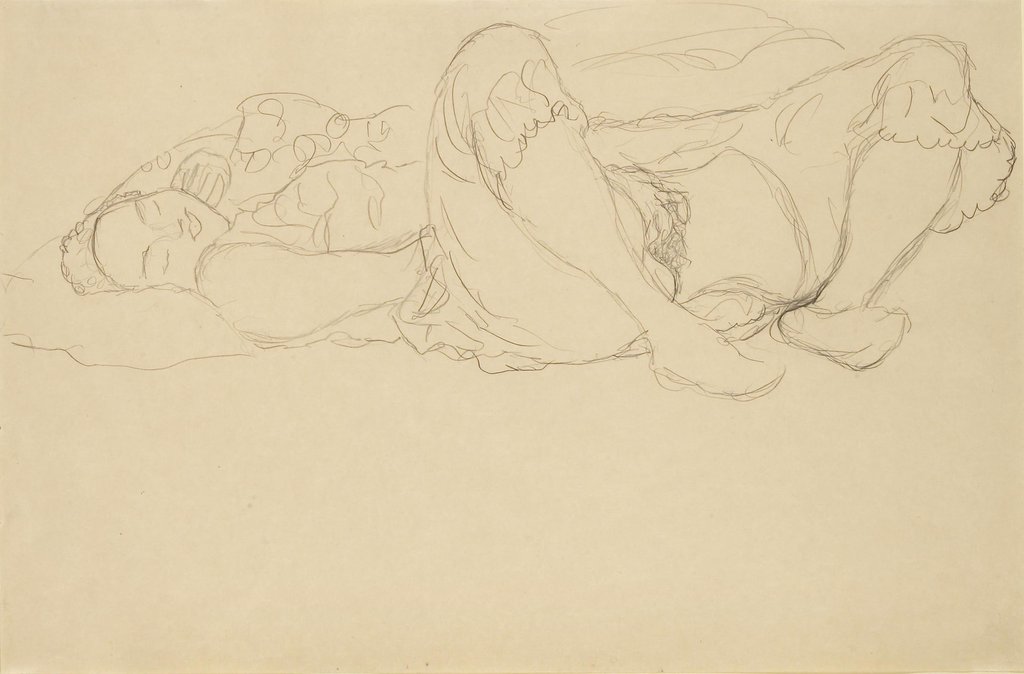
Gustav Klimt, Joven masturbándose, 1916. Lápiz sobre papel, 37,5 x 57 cm.
His drawings have been considered by all art historians to be fundamental to understanding the importance of the artist Klimt. So much so that Gustav Glück went so far as to say that the Austrian artist's work could only be understood through his drawings. If in almost all artists drawing is a fundamental element, in Klimt's case it is essential to understand his way of working and thinking, for even in the case of studies of future canvases it goes beyond the limits of an auxiliary work to become the autonomous axis of his creative activity.
Klimt's interest in drawing came to him very early on. It is known that it was essential for him to be taught by Ferdinand Laufberger, his drawing teacher at the Kunstgewerbeschuele in Vienna (the School of Applied Arts), from whom he learned the need to master technique and to know the anatomy and movement of the human body. The human body will almost always appear either lying on a floor that we do not see or lying on a bed or divan that offers no detail other than, at times, a few lines that suggest a sheet or a blanket. In this way, everything revolves around the body and nothing should obstruct the viewer's gaze.
The work on paper - which he never spoke of in public and which no one witnessed, with the logical exception of the models - was an intimate work of the artist who apparently drew on a low easel inclined at 45 degrees so that he could sit comfortably in front of the person to be drawn. From his friend Carl Moll we know that he had several models at his disposal each day (in addition to any commissions he might receive) and that these were drawn by the artist if they were not necessary to continue working on a painting.
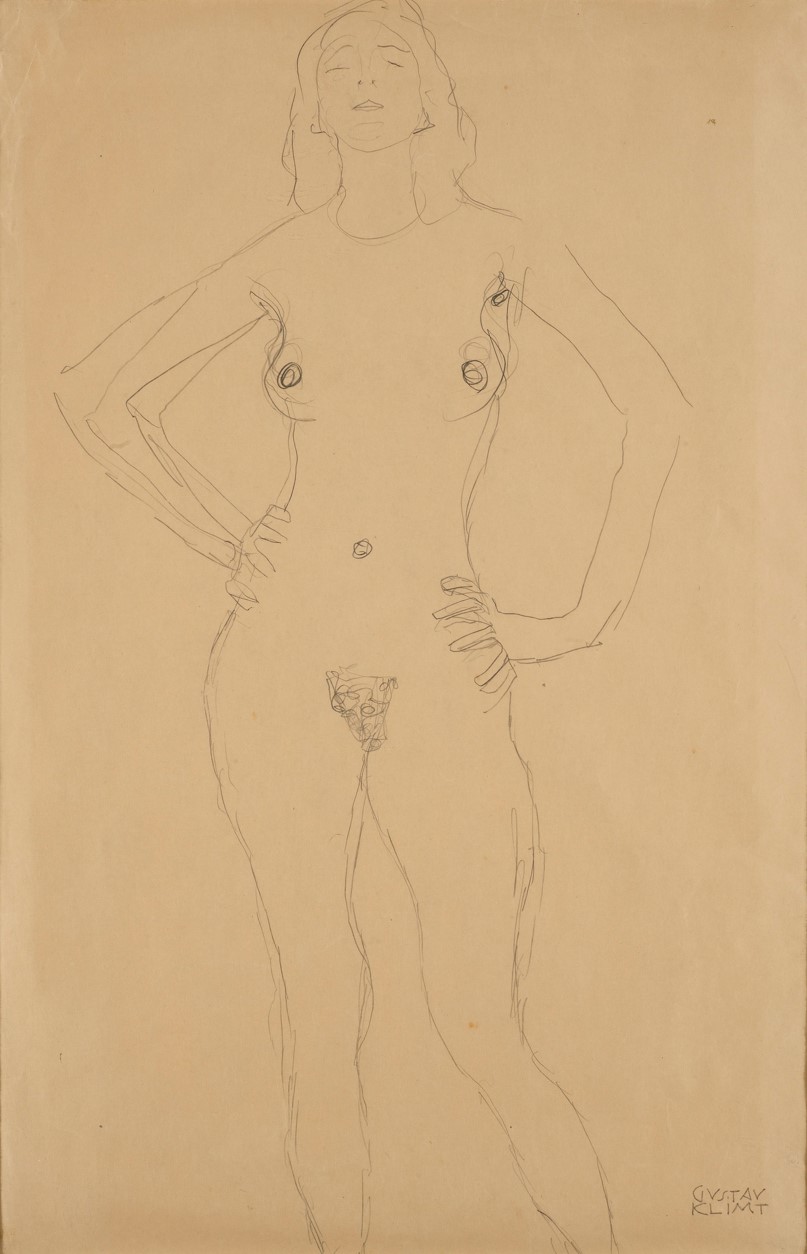
Standing Nude, facing to the front, with Hands on Hips, 1917
Study of “Friends”, 1917
Pencil on paper
55,9 x 35,5 cm
GK006

Detail: Standing Nude, facing to the front, with Hands on Hips, 1917
Pencil on paper
55,9 x 35,5 cm
GK006
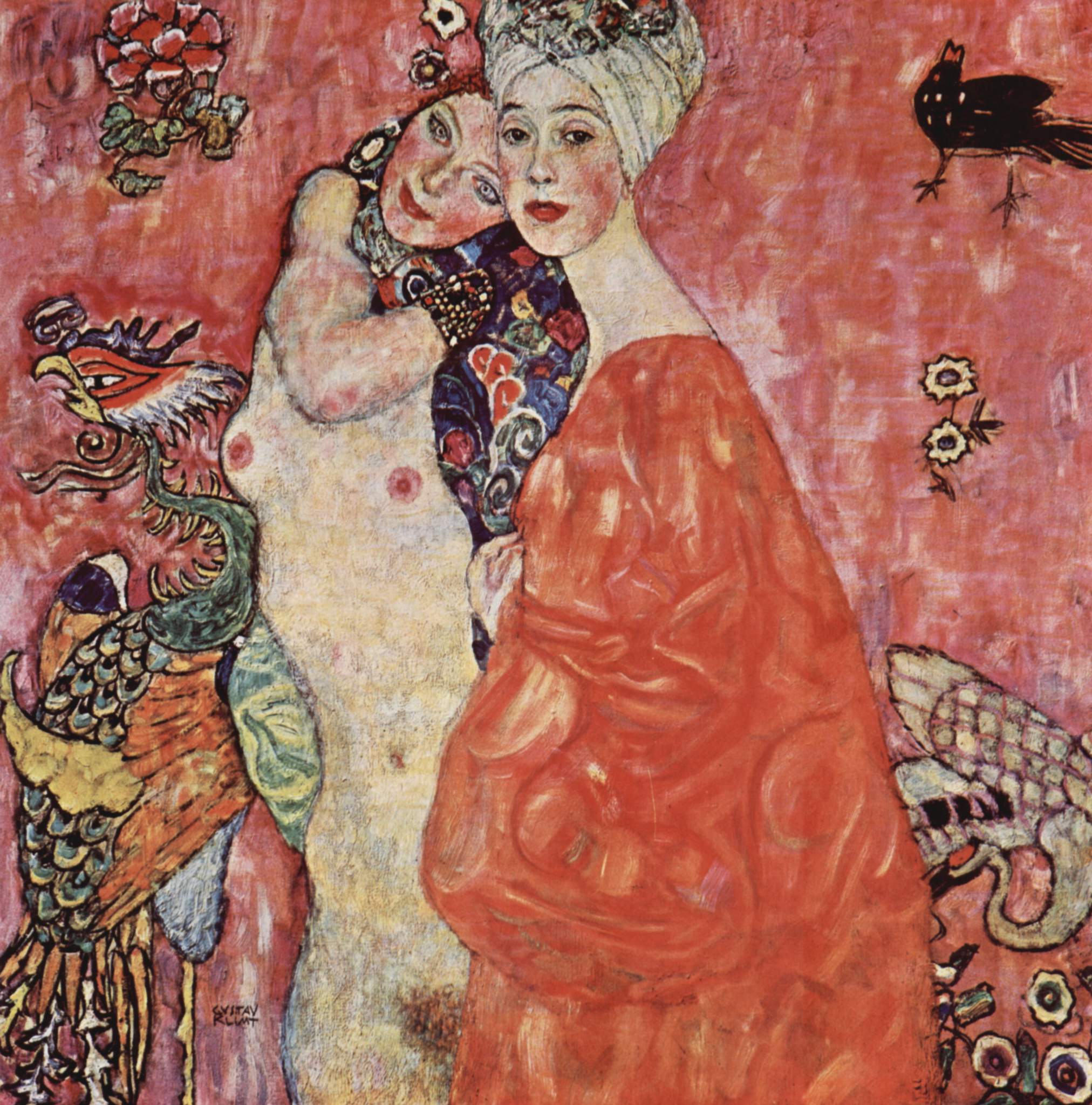
Friends, 1917
Oil on canvas
99 x 99 cm

Detail: Friends, 1917
Oil on canvas
99 x 99 cm
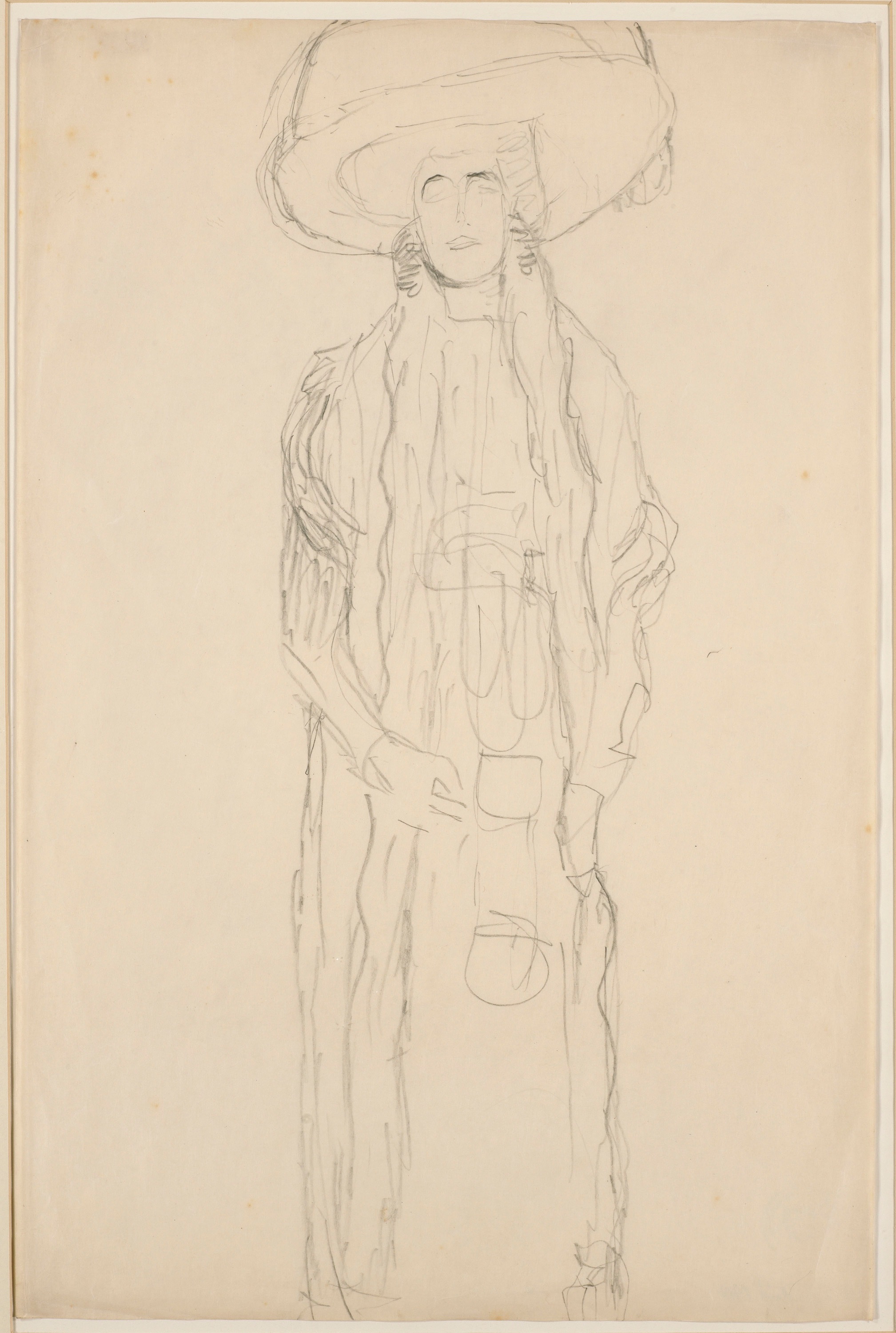
Study for the portrait of Adele Bloch-Bauer, 1910
Pencil on paper
56,5 x 30 cm
GK003
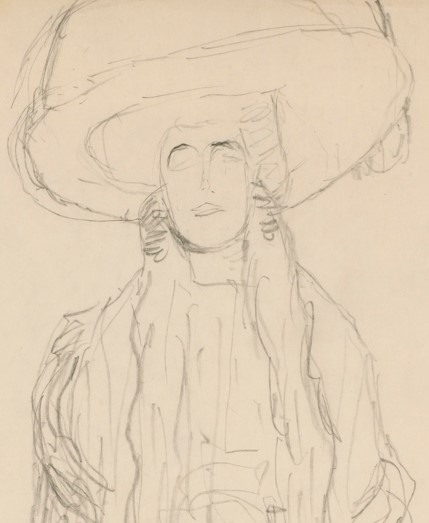
Detail: Study for the portrait of Adele Bloch-Bauer, 1910
Pencil on paper
56,5 x 30 cm
GK003
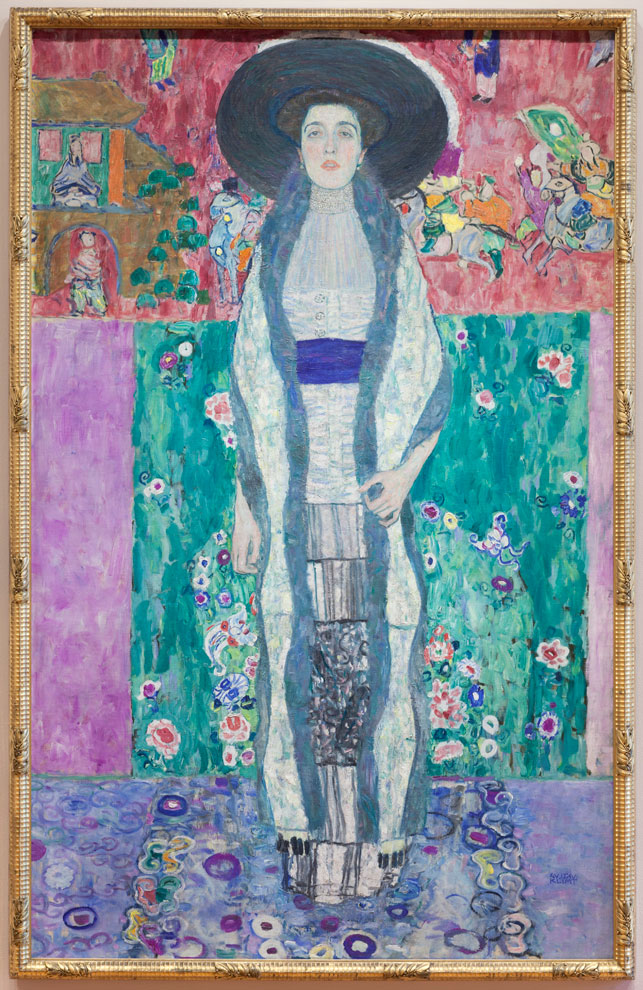
Portrait of Adele Bloch-Bauer, 1912
Oil on canvas
56,5 x 30 cm
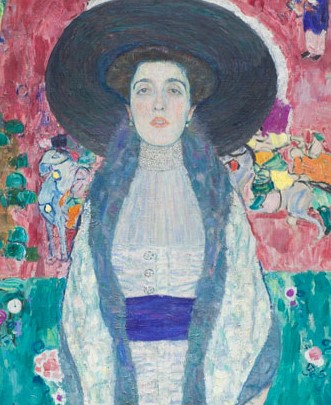
Detail: Portrait of Adele Bloch-Bauer, 1912
Oil on canvas
56,5 x 30 cm
The models, even their nudes, which appear in apparently careless poses, are subjected to Klimt's instructions which, as in the paintings, subordinate the model's pose to the aim of the work: for example, the erotic drawings - which became widespread from the 1910s onwards - present the women in more or less forced positions with the aim of offering sex openly to the viewer with the intention - according to Alice Strobl, the great connoisseur of Klimt the draughtsman, and author of the catalogue raisonné - of: "to allude to the origin of human life which, at the same time, is the central point of sexual arousal". In this sense, these erotic drawings are reminiscent of Courbet's "Origin of the World" (1866), albeit much more explicitly and with the same public scandal at the time. It has also been suggested that the forced poses of these nude models have to do with his avid fondness for collecting Japanese prints lavish with such positions.
As for the time frame of these drawings, they are dated between 1910, the year in which he took part in the Venice Biennale with 22 works, and the last months of 1917 or the first days of 1918, as Gustav Klimt died on the morning of 6 February.
To read the full press release, click HERE
Credits:
Courtesy Richard Nagy LTD, y Galería Cayón Madrid/Manila/Menorca, 2021.
Fotografía © UMFotografía.
